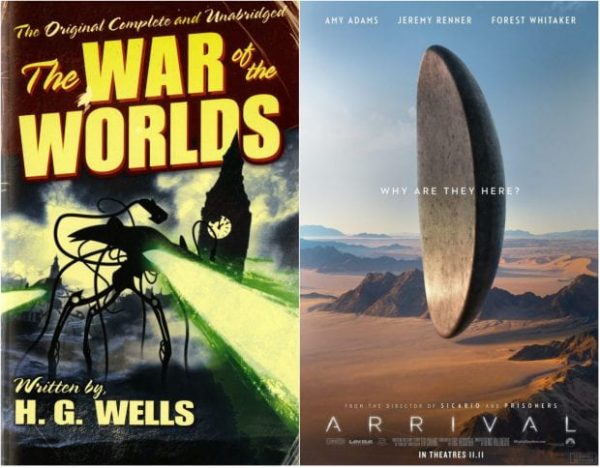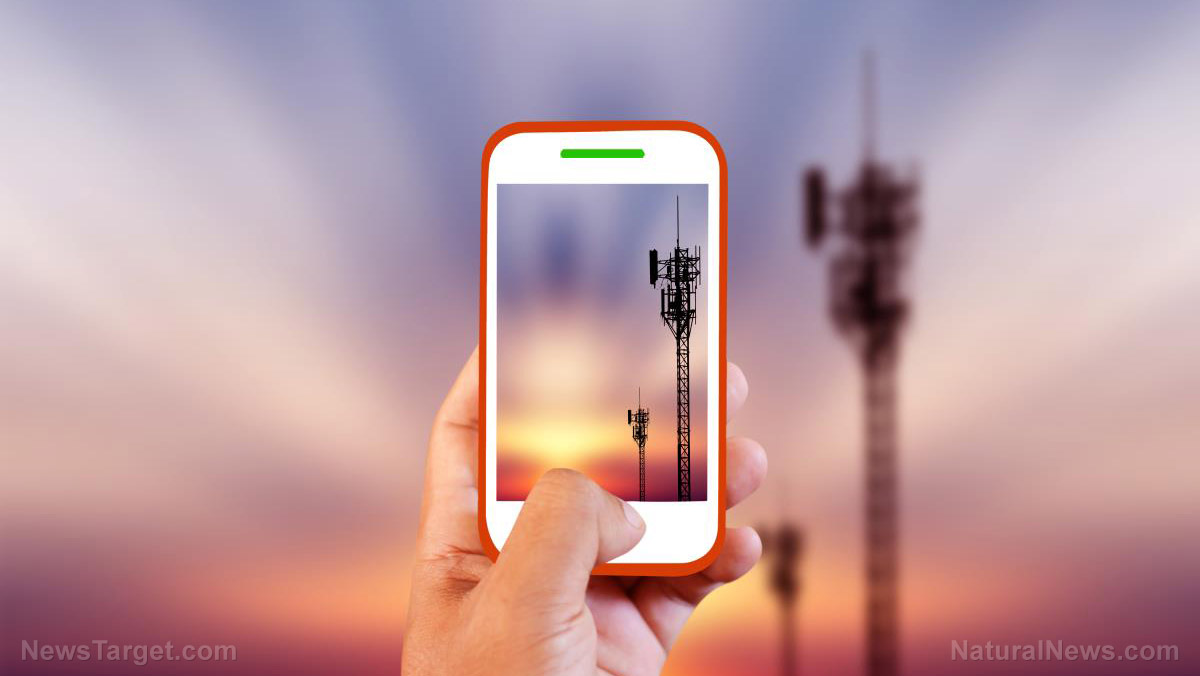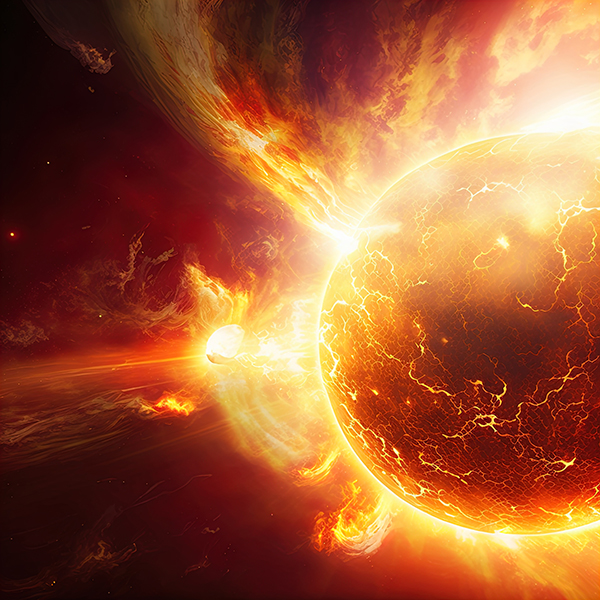
On June 25, 2021, the Office of the Director of National Intelligence published a much-anticipated report on what many people customarily call unidentified flying objects (UFOs). Its "Preliminary Assessment: Unidentified Aerial Phenomena" was a slim, nine-page document presenting 144 events involving these UAPs, collected from United States government and military sources from 2004 to 2021.
(Article by Katharine Shilcutt republished from News.Rice.edu)
Of the events cited in the report, 80 involved multiple sensors and were therefore likely caused by encounters with "physical objects." Many of the UAP events interrupted pilot training or military activity. Some resulted in near-collisions in the sky. Others involved sightings by a number of people or dramatic radar videos, a few of which were leaked and reported in the New York Times, which published two bombshell articles revealing that the Pentagon had, in fact, been taking UFOs so seriously for so long it spent over $22 million on a program to investigate their existence.
Most importantly, the new report from the Director of National Intelligence made clear that only one of the 144 events and encounters reported in the past 17 years could be explained.
The tone of media coverage on UFOs notably has shifted since the initial New York Times article in December 2017. Derision and skepticism have given way to more serious inquiry. And as government reports like these trickle out, open and rational discussion of UFOs may become more normalized — or, as Jeffrey Kripal has said for over a decade, attitudes of disparagement and a general refusal to engage with the full spectrum of the subject may become even more entrenched.
Kripal is the J. Newton Rayzor Professor of Religion and Associate Dean of Humanities at Rice, and he has devoted much of his professional research, public lecturing and published thought to the UFO phenomenon. Along with his graduate student researchers, Kripal has also been compiling a massive archive from the works of fellow UFO scholars and researchers, all of it housed at Fondren Library’s Woodson Research Center.
With this newest report, Kripal and his colleagues, including Leslie Kean — the New York Times journalist who helped break the UFO story in 2017 — will have much to discuss next spring when Rice hosts a conference centered around this new archive. "Opening The Archives Of The Impossible" will take place March 3-6, 2022, in Fondren, and will also include exhibitions from the UFO archives across several floors of the library.
Rice News sat down with Kripal to discuss the immediate impact of "Preliminary Assessment: Unidentified Aerial Phenomena" and what it means for humanity at large.
Rice News: How does a professor of religion come to be an expert on UFOs? They’re not topics one would immediately associate.
Jeffrey Kripal: Well, no one is an expert here. No one. That’s the first thing to know. For my own part, I have been thinking and writing about the UFO phenomenon since about 2004. I first struggled with it because I had to: it was simply everywhere in my historical and ethnographic sources with which I was working for a big history of alternative spiritual currents in the California counterculture that I was writing at the time. My own interests definitively began there, at the Esalen Institute.
People commonly assumed then that the UFO phenomenon was not serious or was some kind of "California" thing. But that is simply not true, and it has never been true. Some of the earliest and most dramatic documented modern encounters have been around nuclear military sites and in cultures and places like Brazil, France, New Mexico — in the summer of 1945, just a few miles from the recently radiated Trinity atomic bomb site and just a week after the bombing of Hiroshima and Nagasaki — and New England. The latter case involved a mixed-race couple who were civil rights activists, no less. The U.S. military, the U.S. intelligence services, American space exploration, Western colonialism, indigenous American cosmologies, a major Black religion — the Nation of Islam — U.S.-Mexico borderlands, Latin America, American-Soviet and now American-Russian relations, NATO, the aerospace and aviation industries, Western esoteric and mystical currents, science fiction literature and the history of science have all been involved. And that is just the beginning.
To study the UFO phenomenon adequately is, in actual fact, to study pretty much everything. It is also to come up against, hard, the realization that the institutional or university order of knowledge within which we work and think today, an order that effectively splits the sciences off from the humanities, is simply not helpful, and certainly not reflective of the reality we are trying to understand. The difficult truth is that the UFO phenomenon has both an objective "hard" aspect (think fighter jet videos, photographs, alleged metamaterials, apparent advanced propulsion methods, and landing marks) and a subjective "human" aspect (think close encounters, multiple and coordinated visual sightings, altered states of consciousness, visionary displays, often of a most baroque or sci-fi sort, and experienced traumatic or transcendent abductions). And both sides — both the material and the mental dimensions — are incredibly important to get a sense of the full picture.
Of course, one can slice up the UFO phenomenon into the "scientific" and the "humanistic," but one will never understand it by doing so. That, in the end, is why I think the subject is so incredibly important: it bears a particular power to challenge, or just obliterate, our present order of knowledge and its arbitrary divisions. Whatever "it" is, it simply does not behave according to our rules and assumptions. Period.
https://youtu.be/nLeL3_GIqTI
RN: So what’s your overall assessment of the new report?
JK: Well, I have one positive thing to say about it, and one big complaint. The positive thing is this: The recent release, along with the leaked radar video dating back to December of 2017 that was so effectively reported in the New York Times by my colleagues Leslie Kean, Ralph Blumenthal and Helene Cooper has fundamentally changed the public conversation around the topic. Serious researchers are no longer looked on with quite so much contempt, and the dogmatic debunkers no longer have the upper hand — if they ever really did.
Moreover, and just as importantly, people from all walks of life who would have kept quiet are now "coming out" of their closets and speaking up. To take just one small example, Miles O’Brien, the science correspondent for PBS, confessed on camera a few days ago about witnessing a UFO that behaved in ways that are basically identical to the ways the objects reported in the document behave: impossibly. Indeed, the most basic point of the O’Brien interview is that the government release constitutes a kind of "turning point" in the public conversation. I think — I hope — O’Brien is correct.
RN: OK, so what’s the complaint?
JK: The bad news involves the nature of this erratic and classified "dribbling out" of data — the refusal of our government to release the goods, as it were, and so give serious researchers full access to all the data. All of it. By doing it this way, they are essentially trying to control the narrative. My complaint here can be captured in the folksy wisdom that, "If all you have is a hammer, all you will see are nails." In this context, since the data is being collected by military professionals whose primary purpose is to protect the nation-state from intruders or enemies, the UAP or UFO phenomenon is inevitably framed in terms of potential "threats." I mean, my goodness, the videos we are watching were taken by the radar systems of advanced fighter jets designed to do one thing: shoot down an enemy object. Is it any wonder that these filmed objects are being framed, literally and metaphorically, as threats?
RN: And are they even threats? We have no idea.
JK: In American popular culture, in film and science fiction, what I call the "cold war invasion mythology" has been dominant until very recently. In this mythology, the UFO is seen as an "alien" invasion that must be fought back or resisted by patriotic, God-fearing citizens. Think, for example, of H.G. Wells’ 1898 novel "War of the Worlds," an invasion story, by the way, inspired by British colonialism. Or, on the American side, think "Independence Day" from 1996.
Only recently have writers and filmmakers begun to move away from this cold war invasion mythology and toward something much more positive, and frankly much more faithful to what we actually see in the encounter and contact cases, if we really study them as opposed to just assuming things about them. Hence a recent movie — by a Canadian director, significantly enough — like "Arrival" in 2016.
[caption id="attachment_549220" align="aligncenter" width="600"] Compare imagery used for H.G. Wells’ book "The War of the Worlds" versus the movie poster for "Arrival."[/caption]
Compare imagery used for H.G. Wells’ book "The War of the Worlds" versus the movie poster for "Arrival."[/caption]
The latter movie borders on the profound, since it orbits lovingly and contemplatively around the paranormal transformation of its central character, a gifted humanist linguist, Dr. Louise Banks. And, indeed, in historical fact, human witnesses are often radically transformed by their encounters, often in extremely positive, if also difficult ways.
Such encounters, for example, can be of a deeply spiritual nature, by which I do not mean "good" or "nice." People experience awe, fear, uncanniness and absolute terror; the Harvard psychiatrist John Mack rightly called this "ontological shock." They experience, either within the event itself or later develop, new astonishing abilities — think telepathy and, yes, precognition. And they adopt new, much more cosmic worldviews.
Hence, in the film, Dr. Louise Banks develops the ability to precognize the future: She "remembers" the early and tragic death of her daughter, who is not yet born, as she gradually learns that time, like the grammar of the alien language she is deciphering, is circular, not linear. This is an idea about space-time, by the way, that is well known to humanists, from ancient Greek philosophy to Nietzsche.
My point? That we should be approaching the UFO phenomenon much more like "Arrival" and much less like "War of the Worlds." But we can’t seem to do that. Instead, we go on and on about potential "threats" and enact endless security and secrecy measures. And then we wonder why no one understands this? As a result of these actions, the human witnesses, their sightings, their transformations and their traumas are arrogantly ignored and disdained as "anecdotal" and so unworthy of study.
I confess that I despise the snarkiness of that word — anecdotal — and the way it shuts down full inquiry. Every human experience, after all, is technically “anecdotal.” In this sense, I, too, am an "anecdote." So are you. We all are. And yet there is no science or mathematics, no literature, language, art or religion, and there is certainly no UFO, without that human subject, without that anecdotal witness, thinker or seer. So why are we not talking about the experiences of those human witnesses and how the phenomenon seems to trigger or catalyze the human imagination in fantastic ways? Why are we not compassionately reading those imaginal dramas as meaningful signs instead of arrogantly ignoring them as neurological froth? Why are we not talking about what happens to the terrified pilots, or the baffled military professionals, or the confused private citizens who see these things, sometimes really up close and very, very personally? Is that not also part of the UFO phenomenon? Why are we looking away? And from what?
RN: That’s a beginning to a whole new conversation. Is there anything you’d like to conclude with, though?
JK: There’s always more. I would like to conclude by suggesting that the most sophisticated piece of technology on the planet to detect nonhuman or superhuman presences is not a quantum computer or an advanced military radar system. It is the super-evolved human body, brain and being. I would also like to suggest that the human being has been detecting strange humanoid presences in the sky and the environment not for a few years or a few decades, but for millennia. All we have to do is open our proverbial eyes and look. All we have to do is put away our hammer and look carefully at our histories, our literatures and, most of all, our religions.
On this new big humanist and historical canvas, what we are encountering in the sky and seeing from the ground today will take on fundamentally new meanings and future possibilities. I do not claim to know what those meanings and futures will be — and I certainly do not believe any of the reigning mythologies, be they political, secular or religious — but I am betting they will have very little to do with the assessment of "threats." That’s the old cold war mythology that it is time to move beyond, way beyond.
RN: Talk about no upper limits.
JK: Yep. There are none.
Read more at: News.Rice.edu and UFOs.news.
Please contact us for more information.





















